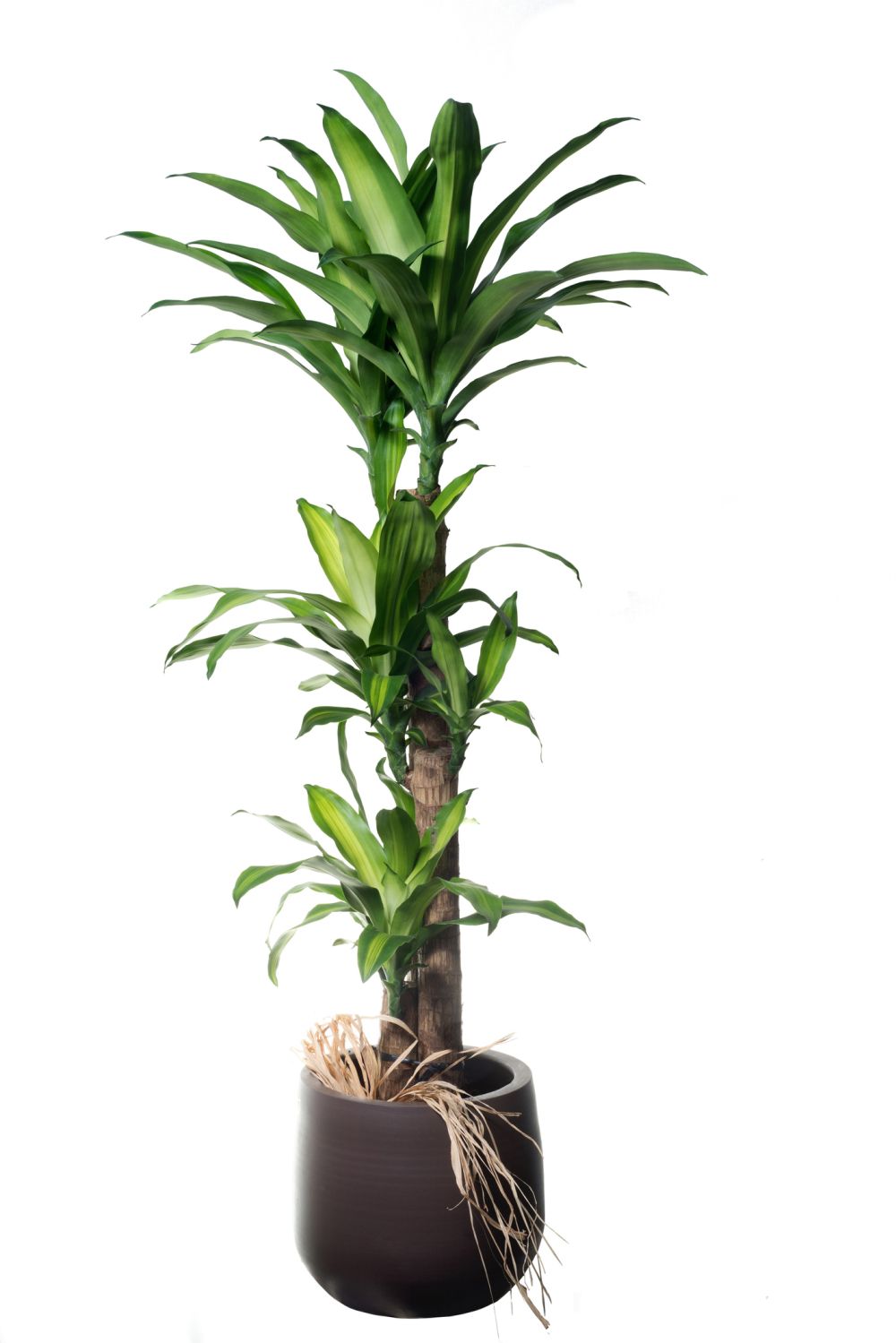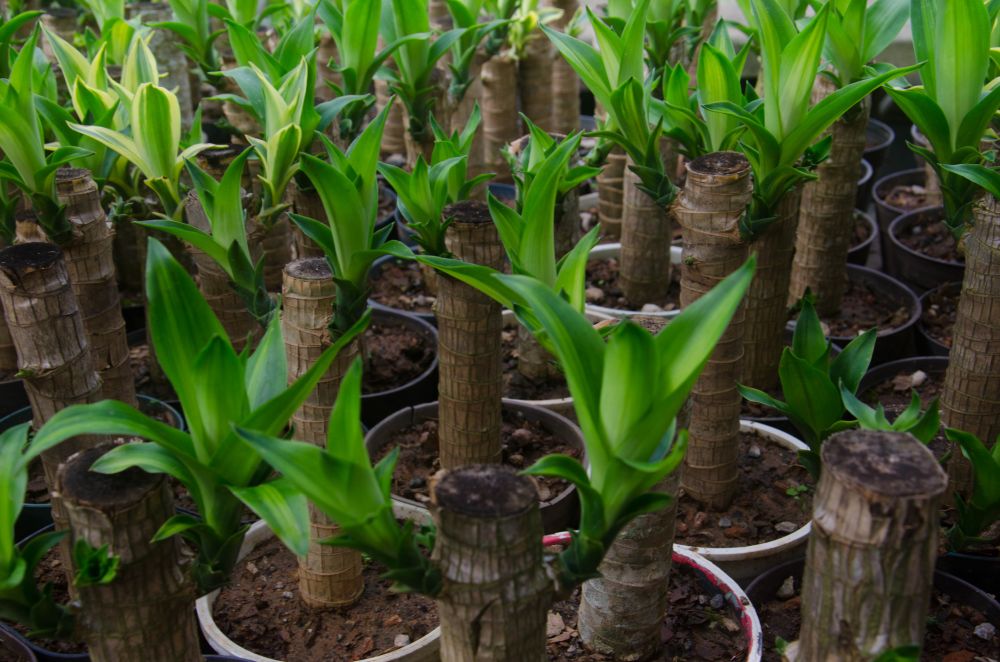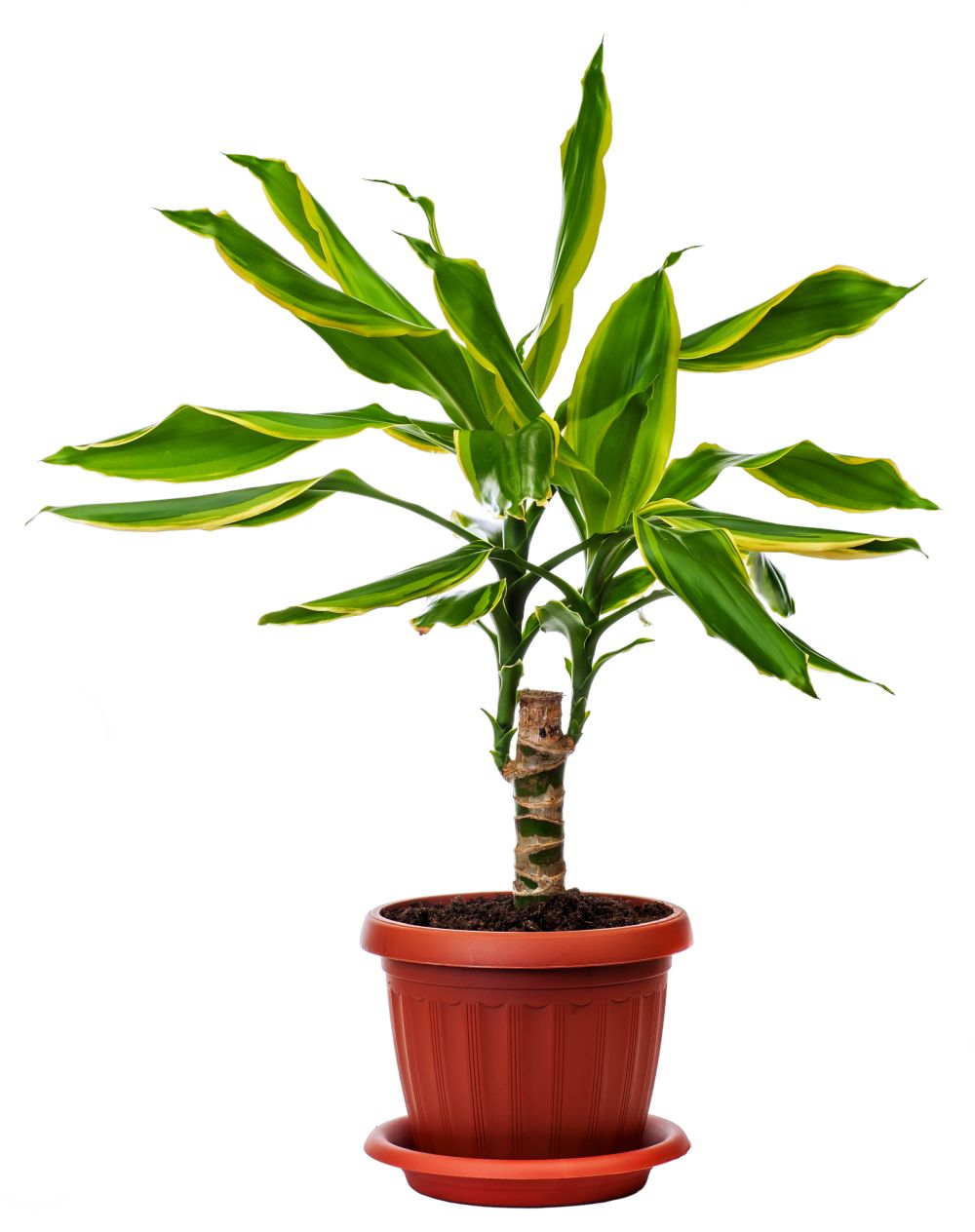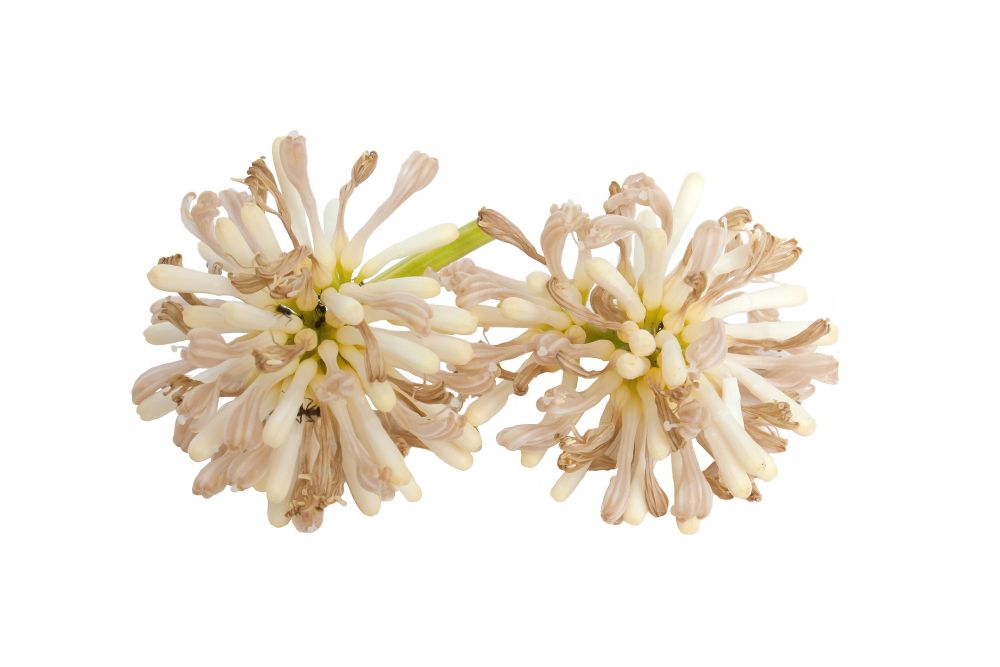Dracaena Fragans Care: Tips on Growing & Caring for the Corn Plant
Tropical plants, both growing indoors or outdoors, are among the all-time favorite for gardeners living in warm and humid areas. And it’s no wonder why Dracaena varieties such as the Corn plant have opulently found themselves in dominating indoor collections in most households. So you just know, it’s scientifically known as the Dracaena fragans. The vibrant evergreen color of tropical variety forms bright foliage, and often stacked up with a set of flowers that bloom in a wide variety of shapes and sizes.
While it originally hails from Africa, southern Asia, and northern Australia, this tropical plant has been grown across European countries since the 1800s but gained momentum in the US from the 20th century till date. While the Dracaena fragans plant has thick and woody stems, it’s still a slow-growing type, so you’ll want to be a little patient to see it hit maturity. Read on to find out more about the Corn plant.
The Corn Plant at a Glance
The Dracaena Fragrans is a popular variety that can grow plausibly that under sub-tropical climates either indoors or in gardens. To give more context about its appearance, the plant has sparkly green leaves with red highlights on them, as well as white flowers. The Chinese love to call it “Dragon Princess”. Nearly all dracaena types are lenient houseplants and easy to care for, not to mention they require little when it comes to feeding, watering, and lighting.
The gorgeous Corn plant, to be precise, is gentle on the eyes and doesn’t demand too many caring requirements. One thing you’ll note with most Dracaena plants is they can even outside overnight when it’s winter without facing any ill effects. This evergreen tropical houseplant can thrive for quite a solid number of years if well taken care of.
It’s known for its wide range of sizes and tones, depending on the weather variations it gets acclimated to. You’ll also probably find the Corn plant labeled Dracaena massangeana in some gardening stores and nurseries. The leaves of this variety are mostly triangular in shape and have a reddish color that fades at the tips. Most dracaena varieties grow around 3 feet tall on average, but there is some discrepancy depending on what type you’re looking to grow. For the Corn plant, there are chances it can grow up to 5 feet tall, or slightly more.
Corn Plant Varieties
There are quite a handful of Dracaena varieties that still have the aura which is strongly expressed by the Corn plant. All of them grow best in full-sun or part-sun conditions.
- Dracaena fragrans ‘Lemon Lime’ has thin, colorful leaves with lemon and lime blotches in their leaves. It boasts beautiful flowers which last for quite a while, unlike most other varieties.
- Dracaena fragrans ‘Victoria’ is a popular variety because it displays gorgeous red blooms during the summer months when other varieties are at rest.
- Dracaena fragrans ‘Limelight’ comes with thin lime-green leaves with pinkish ends and overlapped thick stipes them. They produce long red flowers in the summertime too.
- Dracaena fragrans ‘Lindenii’ is a variety that comes with beautiful green leaves, and a large maroon blotch on the center of each one.
Dracaena Fragans Caring Instructions
Flowering & Fragrance
Flowers are most cherished by gardeners and perhaps you want to know if there’s a possibility for your Dracaena to produce any flowers. Well, if your plant does flower, chances are pretty high that they’re doing so in order to attract pollinators—especially when it’s growing outdoors. So, there’s a likelihood you’ll see your Corn plant bloom during the growing season.
During the nighttime, this plant will produce a nice scent that spreads a few feet in radius. Sadly, the fragrance won’t last long. Probably between 3-7 days and that’s it. But the foliage still remains intact. It’s also worth noting that most Dracaena plants only flower when the outdoors in temperatures are above 50°F (10°C). We’ll look at the suitable temperature conditions in the next section. So, if you’re living in a region with frosting conditions, the chances are really slim.
Light, Humidity & Temperature
On the face of it, it would seem like there is no perfect light, temperature, or humidity level that guarantees the success of your Dracaena fragans, even more so if the surrounding conditions where you live fluctuate from time to time. However, there are some general guidelines you can follow to help your plants thrive in a variety of settings—whether it’s scorching hot or downright chilly in your area.
First, it’s worth noting that despite their affinity for warmth, the intense heat will gravely damage the plant’s overall appearance. It’s typical for indoor tropical plants and shrubs, including the Corn plant, to prefer indirect light or diffused sunlight because they can be burned by direct sun exposure. Even though this variety is a tropical plant naturally glued to warm and humid conditions, you want to place your potted Dracaena fragans plant in a spot where there’s indirect light.
A south-facing window is the best choice if you live in a temperate climate and want to grow such a plant near a windowsill. A west-facing window is a perfect place if you live in an area with a dry and arid climate. Last, but not least, a north-facing or east-facing window is ideal for colder climates, or when you want to keep it alive during winter because they absorb less heat from the sun than other windows do.
So, here are the numbers—the ideal temperature for this plant is between 68-72 degrees Fahrenheit. On the other side, you need to be conscious that if it’s too cool or too warm, the spike from both extremes can be dreadful to this plant’s overall health. Allowing them to grow at a continuous range of 68-72 degrees is ideal, with a forgivable fluctuation from 70-75 every 10 days or so. It should also be noted that humidity needs to stay below 75 percent so as not to cause discomfort for the plants’ leaves and stems.
Dracaena plants are fairly humidity-friendly plants. But what is the best humidity range for such a tropical variety? It’s obvious that the suitable number depends greatly on the species of plant and where it’s primarily from. Depending on how varied your collection could be, you may want to invest in a humidifier or a dehumidifier. But, for the most part, the ideal humidity for this variety would be anything between 40-50%.
Watering & Feeding
When it comes to watering and feeding there are few steps you want to follow to help keep your Corn plant healthy and happy. As is with other tropical plants, this variety prefers a little bit of moisture on the regular, especially during the warmer months. But before watering it, you first want to check the color of the soil. Assuming you’ve used the potting mixture tips we’ve right under the soil and transplanting section if it’s light tan, then your plant needs water and feeding.
The other way you can tell whether your Dracaena fragans plant is thirsty would be by checking if the leaves are drooping downwards or curling at the edges. If the leaves are curling up and seem to have a white film on them, means you need to water it more frequently. The plant could also lose its leaves altogether when neglected for a long period of time. When watering the plants, make sure that the soil dries completely before you water again. That would help prevent root rot and lower the chances of escalating into a fungus infection.
Using a fertilizer that’s rich in nitrogen and phosphorous helps promote flower production and is best during periods of cool weather or drought to ensure quick root growth. It’s, however not advisable to feed your houseplant during winter since the growth hormones usually go into their dormancy during this season. Calcium is also known to help flower plants withstand hot weather, especially if applied in conjunction with a nitrogen-rich organic fertilizer such as urea. Once you spot some early signs of blooming, all you need to do is buy a soluble fertilizer and feed your Corn plant according to the directions on the label.
The best fertilizer for this Dracaena variety is one that’s nutrient-rich water-soluble. You can also use fish emulsion, kelp extract, or worm castings—if you embrace the organic options. The other way around it is using the hydrolyzed fish and seaweed fertilizer. So, you could wonder whether this plant food could work. Well, the short answer is: Yes, but not as perfect as most other fertilizers with nutrient ratios suited for tropical houseplants.
But, the best thing about it is that it’s natural and made of materials you may have around your home already—and organic stuff wouldn’t pose any dreadful threats to the nutrient potency of the potting soil. Organic materials also don’t hurt the beneficial microorganisms as synthetic fertilizers would. So, here’s the bottom line: Fertilize lightly and water regularly, but avoid overwatering.
Soil & Transplanting
What you need to first take care of when preparing the potting mixture for this tropical plant is drainage. Most tropical plants need soil that’s loose and permeable enough to let water pass through. However, some soil types are better than others when it comes to retaining moisture. While the Corn plant needs soil that doesn’t stay soggy for too long, it still requires some moisture around it, especially when the temperatures are warm.
First, let’s look at the two most important ingredients in potting soil for tropical plants: peat moss and fir bark. These materials can help with water retention as well as making your soil loose enough so that it won’t compact tightly under the weight of a plant. Next, you should also consider adding sand or crushed oyster shell for increased drainage. Crushed oyster shells contain calcium that helps build strong cell walls for your Dracaena fragans plant. They also won’t break down fast as is with other commonly used soil amendments, and that your plant will utilize the nutrients for a longer time.
The other amendment type that’s widely used to improve moisture retention is perlite. If the potting soil is permeable, you won’t need to worry about molding or rotting that often crops up when the soil is wet too long. Sand will also allow water and air to pass through more freely than other soil components. When planting your Corn plant, you want to consider using a growing pot with enough drainage holes to let out any excess water.
Depending on how tall or wide your Dracaena fragans plant will reach, you might have the pressing need to transplant it into a bigger container. But what is the perfect time of year to transplant your plant? The most popular time to transplant a Dracaena fragans is early spring. There’s, however, a probability that it will suffer from root loss due to the shock, change in weather, or soil surrounding it. Newer, richer soil is highly recommended, so you might want to replace the old one.
Common Pests & Diseases
Pests
This Dracaena variety isn’t prone to serious pests or diseases. But, most often, tropical plants will generally suffer from a few common issues, depending on the growing conditions. So, it’s important to know what common pests they’re susceptible to and how to deal with them. You want to keep an eye on these pests that forcefully like to prey on tropical plants. What’s most important to not note is these pests tend to affect different Dracaena varieties in the same way. Some of the pests that you should keep an eye out for include spider mites, aphids, scales, mealybugs, and—though not so much often—caterpillars.
Mealybugs are also often traced on new growth and mature Dracaena plants that are beginning to get acclimated to suitable growing conditions. Their tiny size makes them difficult to see so you’ll have to be a little more watchful–or perhaps consider using a microscopic glass that’s perfect for miniatures. They leave a sticky substance behind which will turn the leaves gray or creamy white and discolored as they dry out gradually.
What’s utterly odd about scales is, they’re tiny insects that feed off other small bugs like aphids and mites, so you’ll find them mainly on plant stems with some early wilting marks under the leaf edges Aphids suck plant juices, including sap from young leaves. This first gives them a yellow color followed by dry patches.
Caterpillars, on the other hand, overwhelmingly come in two different kinds. You’ll find the leaf roller and the tent caterpillar. These caterpillars feed on leaves. But typically, the leaf roller only eats young leaves, whereas the tent caterpillar eats mature leaves as they begin to fall off the plant. You may need to spray the affected areas with an insecticide like Malathion or Trifecta or handpick the visible pests from the leaves.
Diseases
Mold is one such issue that affects many types of plants, especially in humid environments where air circulation is low. Mold causes leaves and leaf surfaces to turn black and fuzzy or look slimy. They can also have a musty odor when touched. Occasionally, mold can also spread to the flowers.
To prevent or minimize it, try to provide plenty of ventilation and space between the plants. Like mold, there are usually black and sooty substances that develop in humid environments with low air circulation. You may find this black fungus on the top surfaces of leaves, as well as on the stems and their containers.
Apart from giving your Dracaena fragans plant the right humidity levels and air circulation, wipe the leaves from time to time with a damp cloth, to remove any dust or debris that may be causing condensation on the leaves’ surface, or blocking the pores.
Other diseases that often affect the flowering tropical plants, including botrytis, bacterial canker, powdery mildew, and fusarium wilt are also worth watching out for. Same with the effects of mold, the flowers or buds may become brown and shriveled, and they may appear to be covered in a white or golden powder.
Botrytis is commonly referred to as “gray mold” because it leaves grayish spores on the surface of infected tissue. For this reason, it’s important to try and clean affected areas quickly before too many spores have formed. You can clean the affected areas using isopropyl alcohol.



